"The lawn mower robot track ushered in the singularity moment of the industrial outbreak", in March, a research report from CITIC Securities attracted the market's attention to the "unpopular track" of lawn mower robots.
Robot companies may not have thought that the first order to "explode" will be the seemingly ordinary lawn mower robot.
The main sales market for China's lawn mower robots is in Europe, and there are giants such as Husqvarna in Europe. However, in this "dark war" of lawn mower robots, Chinese lawn mower robots have demolished the "home" of competitors and obtained a large number of orders in the European market.
Since mid-March, the reporter of "Daily Economic News" has interviewed No. 9 Company (689009. SH), Ecovacs (603486. SH), Glebo (301260. SZ) and other listed lawn mowing robot companies, a number of people responsible for overseas markets told reporters that orders in the European market have increased greatly this year. After the Spring Festival, some companies added 30% of orders in the European market, which was a phenomenon that had not occurred before. And some enterprises' orders for lawn mower robots have doubled, and even reached "hundreds of percent" growth.
Why is the "singularity moment" of lawn mower robots "intelligently made" in China? The reporter learned that the main reason is the intelligent iteration of China's new lawn mowing robot products, and the emergence of intelligent functions such as borderless and automatic positioning. In particular, after the price of key products such as lidar has dropped, the performance of China's lawn mower robots is higher and the cost is lower.
Some companies say that this year's orders are "hundreds of percent" growth
At the CES show in January 2025, a group of Chinese engineers are squatting on the ground to debug equipment. In front of them, the silver-gray robot propelled along the S-shaped trajectory at a uniform speed, and where the blade swept, the grass clippings were evenly paved in a straight line - a scene full of industrial aesthetics, so that foreign buyers passing by couldn't help but take out their mobile phones to take pictures.
Many Chinese companies have launched new intelligent lawn mowing robots, such as Changyao Innovation, Nine, Songling, Ecovacs, Anker Eufy and MOVA. China's lawn mower robot swept the CES exhibition, and behind this silent "lawn revolution" is the most familiar breakthrough script made in China.
The first scene of the breakout script - the order for China's lawn mower robot "exploded".
"After the Chinese New Year, we will increase our sales in Europe (market) by 30%, which is a phenomenon that has not happened before." Liu Ming (pseudonym), who is in charge of the overseas market of Glebo, feels that the "spring" of lawn mower robots in the European market this year has come a little earlier than in previous years. Another lawn mower robot company even mentioned a data that surprised the reporter even more - "hundreds of percent order growth".
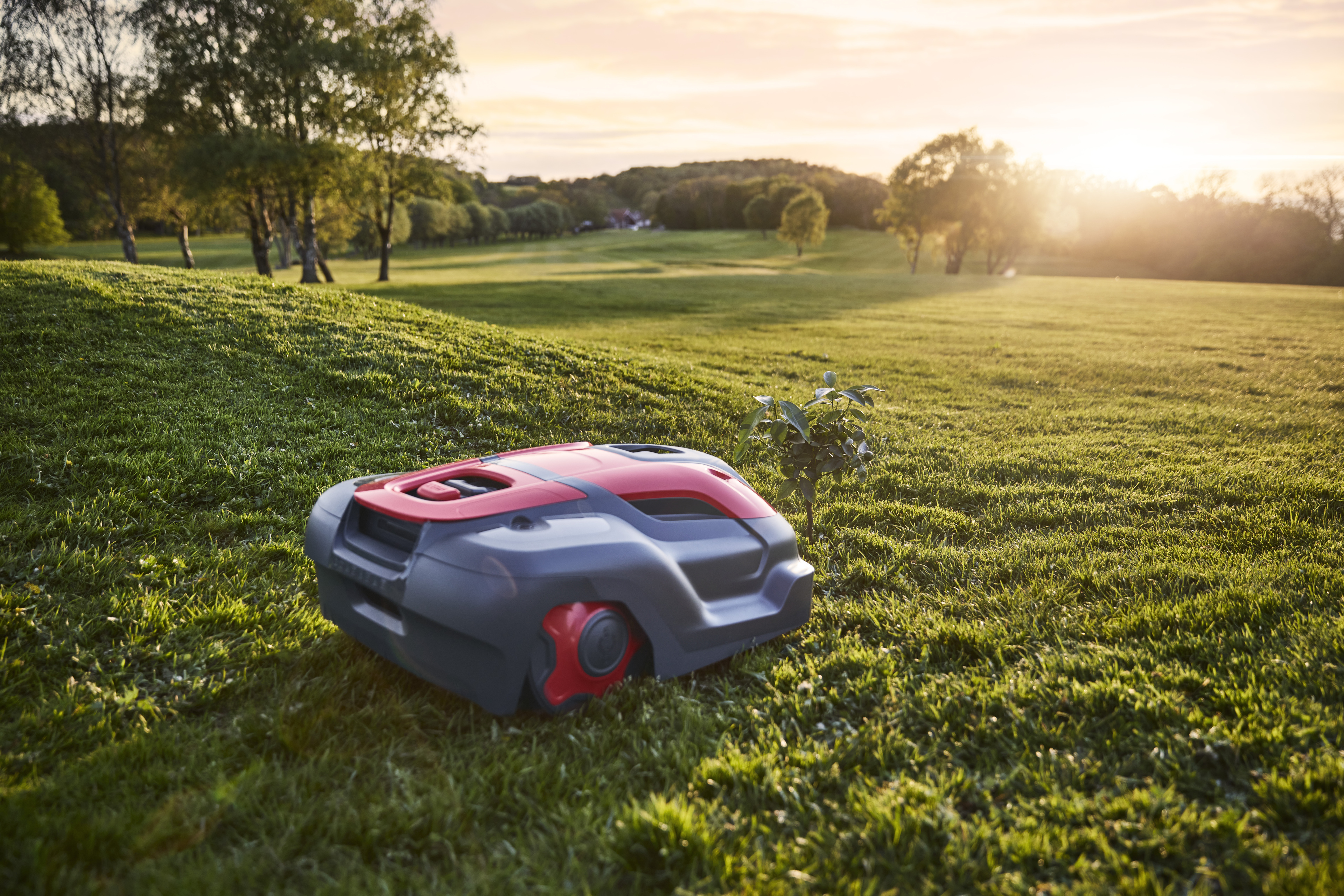
Glebo's lawn mower robot Image source: Courtesy of the company
Li Lei (pseudonym), who is in charge of the overseas market at Ecovacs, has been working in the European market for a long time, and he was surprised by the increase in orders for lawn mowers. Generally speaking, the peak season of lawn mower robots in the European market is generally around May, and there is a process of "order climbing" in March every year. Of course, this is also related to the pace of Ecovacs' lawn mower robot launch this year and the expansion of sales channels.
"Judging from our market feedback in Europe, the Americas and other major regions, the market demand for lawn mower robots from overseas users is still very high." The relevant person in charge of No. 9 Company said that the company released the first household borderless intelligent lawn mowing robot, which subverted the traditional manual lawn mowing mode. In the first three quarters of 2024 alone, the company will achieve sales revenue of 595 million yuan for intelligent lawn mower robots, a year-on-year increase of 379.28%. Judging from the performance of the intelligent lawn mower robot of No. 9 Company, the market demand for lawn mower robots in the entire European and American markets is relatively strong. There are not only new user needs, but also a large number of stock replacement needs that have been transformed from traditional manual labor.
According to public information, there are about 250 million private gardens in the world, including about 100 million in the United States and more than 80 million in Europe, accounting for 72% of the global total. Since the 70s of the last century, gasoline-powered lawn mowers have gradually become a common tool for yard maintenance. With the development of technology, consumers in these regions have begun to pay attention to lawn mowing equipment with smart functions in recent years.
However, this shift seems to be just a taste. The first consumers to use smart lawn mowers are mainly in Germany and France, because the per capita "wallet" of these two countries is a little bulging. Even so, Liu said, the penetration rate of intelligent lawn mower robots in these two countries is only 50 to 60 percent. However, in addition to the above-mentioned countries, the overall penetration rate of intelligent lawn mower robots is still "growing".
In Northern and Eastern Europe, the penetration rate of intelligent lawn mower robots may be around 10% to 20%. Li Lei estimates that the proportion of intelligent lawn mower robots in lawn mowers is still relatively low, in the early 10%. The figures for the North American market are staggering, with larger courtyards and lower penetration of smart lawn mowers. Liu Ming said that the current penetration rate in North America is less than 5%, "North Americans like to DIY (personal assembly) by themselves, and it takes time for the concept to change."
Low permeability means going from "0" to "1". In March this year, a research report on lawn mowing robots by CITIC Securities sparked heated discussions in the market, and the core view of this research report is that the 2024 of lawn mower robots is similar to the sweeper industry in 2017, and the industry will enter a period of technological dividends. In addition, benefiting from the upgrading of product structure, the borderless and non-buried models are accelerating the replacement of buried models, and the average price of the industry is expected to usher in an upward cycle. It is predicted that from 2025 to 2028, the overall scale of the global lawn mower robot industry is expected to grow at a CAGR (compound annual growth rate) of 33.6%.
"Non-threaded" lawn mowers are "eating" the European market
When the technology of lawn mowing robots gradually matures, intelligent iteration gives more possibilities to the industry.
In
a villa on the outskirts of Munich, a half-meter-deep trench runs across the lawn of a German family. Workers bury orange cables in the ditch, like a hideous scar sewing up the green space. Underneath the iron casing of the lawn mower is a section of wire. Sweden's Husqvarna was the first to apply thread lift technology to commercial robotic lawn mowers in the 90s of the last century, making it a pioneer of modern intelligent lawn mower equipment, and once monopolized the entire market with "thread lifter navigation" technology. One or two generations, Husqvarna's man-powered "thread blotting" mowers are almost the first choice for European households.
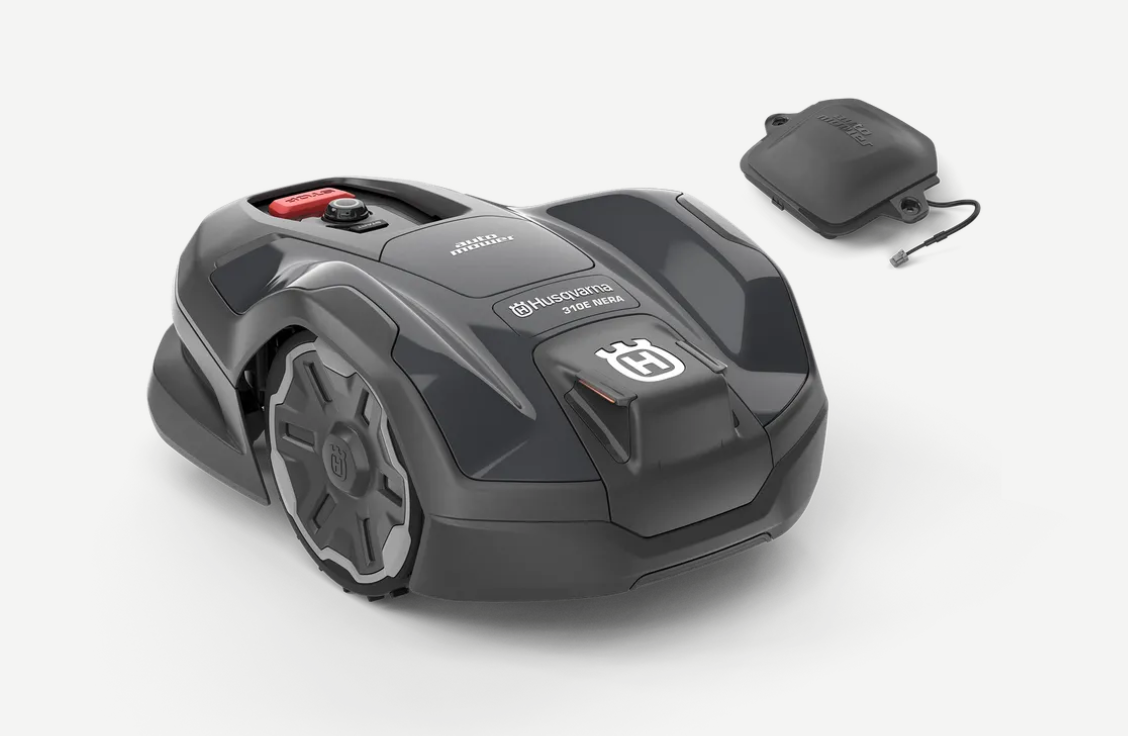
Husqvarna's lawn mower robot Image source: Husqvarna official website
Liu Ming said that for a 4,000-square-meter yard, the manual installation fee involved in the buried line reached 700 US dollars. Hire three or four people at the same time, and do it in a day to two."
Li Lei said that if you have a 500 square to 600 square meter lawn at home and ask a professional to weed, it may cost 200 euros, "in the peak season, you may have to mow it once a week, and it is 800 euros a month." It costs thousands of euros a year to mow the grass, not counting the initial cost of burying the thread.
Of course, compared to the 70s of the last century, China's rural areas are still wielding sickles to weed, and European lawn mowers are leading the technological trend. After this generation gap lasted for a full 40 years, cross-border e-commerce cargo ships rushed to the other side of the Atlantic with the first batch of domestic lawn mower robots, and things quietly changed.
Nine Company (689009. SH), a new generation of intelligent lawn mower robot Segway Navimow X3, adopts EFLS 3.0 (Precise Fusion Positioning System), which not only has wider signal coverage, but also shorter signal transmission delay. VSLAM (Visual Synchronous Localization and Mapping Technology) and VIO (Visual Inertial Odometer Technology) can improve positioning performance, solve the signal occlusion problem in some scenarios, and enable them to operate stably in complex environments.
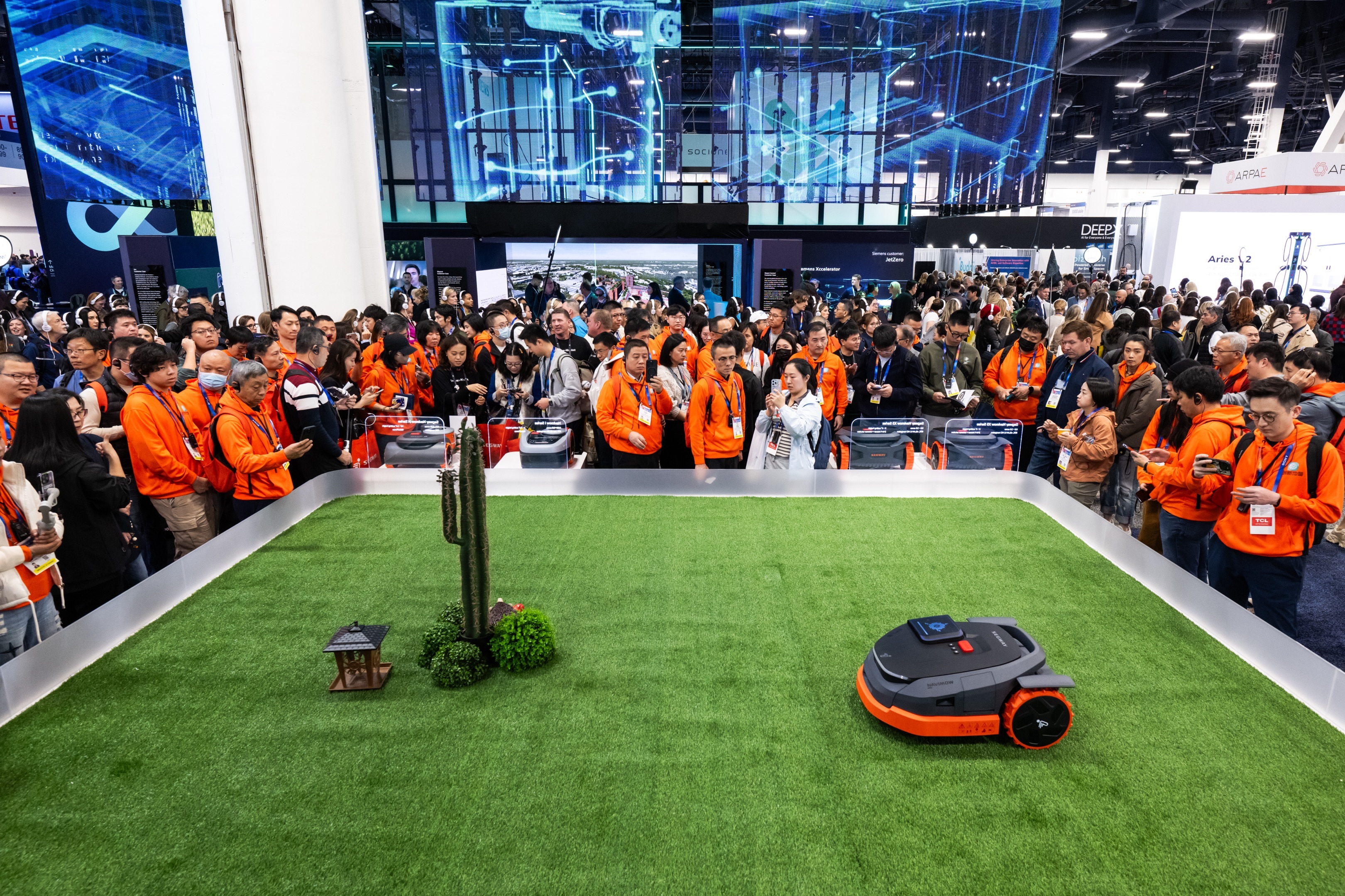
Nine's Segway Navimow X3 series of intelligent lawn mower robots will be exhibited at CES 2025
Image source: Courtesy of the company
Ecovacs GOAT A3000 LiDAR adds dual lidars to the RTK perception system, significantly improving the accuracy of recognition, navigation and obstacle avoidance. Equipped with a 32V large-capacity battery, combined with dual cutterhead design and LELS positioning technology, the work efficiency is three times that of the original lawn mower robot.
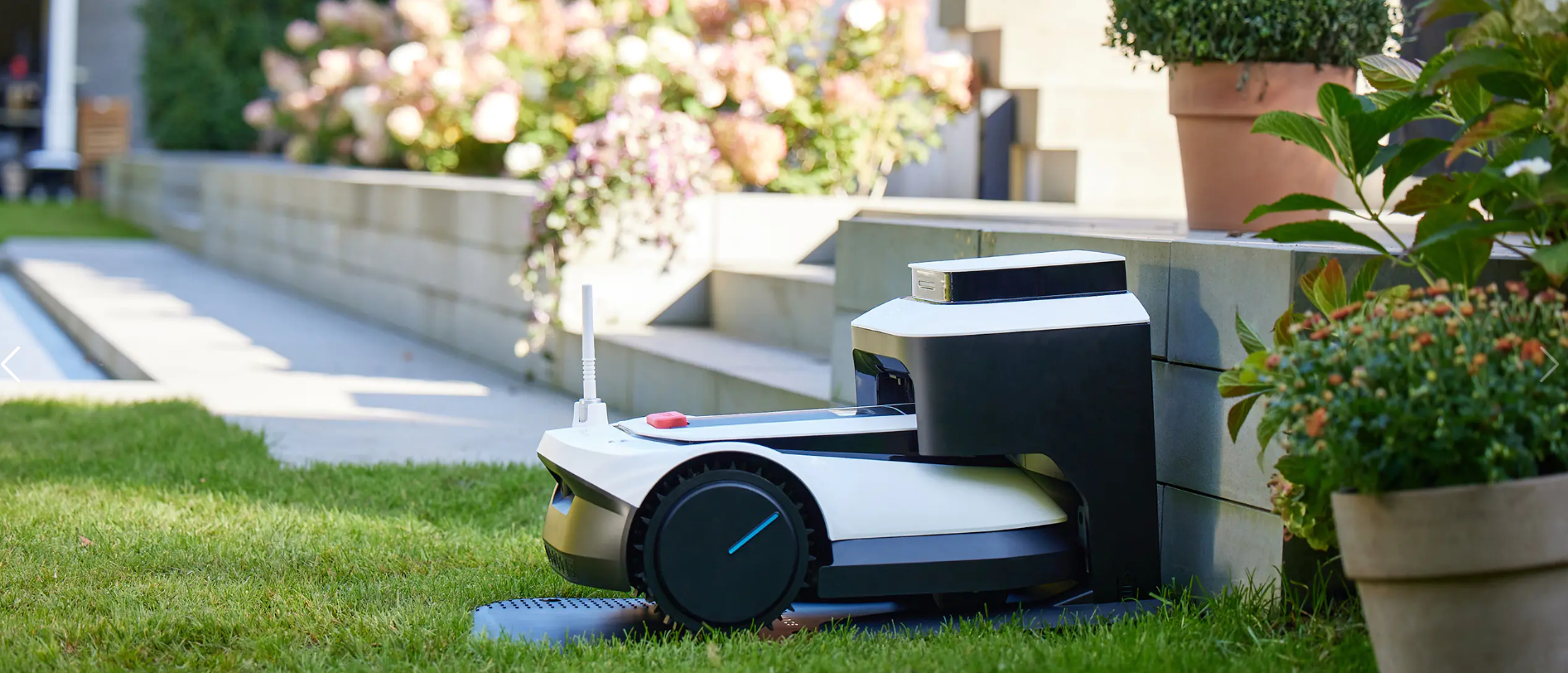
Ecovacs GOAT series lawn mower robot Image source: Ecovacs official website
There is no need to "bury the line", intelligent mowing, accurate positioning, "a mobile phone, I can operate the lawn mower robot in real time around the world...... In the past, the positioning was measured in meters, but now the error is only two centimeters," Liu Ming said. Glebo's lawn mower robot uses "camera + millimeter-wave radar to form an 'electronic eye'", which automatically detours when encountering obstacles, and millimeter-wave radar identifies the density of grass stems, and the cutting accuracy reaches the centimeter level. "There are nearly 10,000 different species of grass in the world, and the recognition also needs to take into account the light, rainy days, and fallen leaves..."
In the view of the above-mentioned lawn mowing robot industry insiders, intelligent lawn mowing robots such as borderless, non-wiring, and automated lawn mowing are slowly "eating" the market share of robots that need wiring.
Liu Ming gave an example, Husqvarna lawn mower robot had a market share of about 70% in Europe at its peak. With the influx of intelligent robots in China, Husqvarna's market share is estimated to be around 50%. He believes that the reason why Husqvarna's market share is eaten up is that the progress of its own product development is not fast enough, and the pace of intelligence is slow.
The domestic supply chain has changed from "low price" to "iterative empowerment".
Traditional fuel vehicle manufacturers once firmly believed that the internal combustion engine was irreplaceable, but this stubbornness has given a fatal gap to China's new automakers - the "disruptive innovation" of new energy vehicles.
A similar scene to the development process of new energy vehicles is also being staged on lawn mower robots. The gears of the lawn mower on the lawn are still turning, and when the Chinese robot runs over the grass on the outskirts of CES, it is not only the blades of grass that are cut, but also the last "arrogance" of the old lawn mower robot.
According to TraQline statistics, in the field of outdoor power equipment in North America, the market share of fuel-powered garden machinery has declined from 55.4% in 2012 to 32.8% in 2022, while the market share of new energy garden machinery has grown rapidly from 13.4% to 44.9%.
In the era without lithium batteries, it is difficult to add artificial intelligence to lawn mower robots because of the complex mechanical structure of the gasoline system. Lithium battery can integrate complex systems on chips and circuit boards, and then equipped with a motor, lithium battery makes it possible for lawn mower robots to achieve intelligence. This is the evaluation of people in the lawn mowing robot industry: positioning and navigation, AI and other technologies complement each other, and the explosion of artificial intelligence provides an opportunity for robot companies, but it can only be "fitted".
Needless to say, the advantages of China's lithium battery are needless to say, CATL (300750. SZ) and EVE (300014.SZ) have been installed in the "body" of China's lawn mower robot. Liu Ming said that according to the calculation of the range of 1,000 square meters, the household lawn mower robot needs to mow for 2 hours, but it only needs to be charged once. For the 10,000-square-meter site of the municipal garden, it can be cut with three or five charges.
The intelligent lawn mower robot continues to be disassembled, and each of its parts can piece together a large map of China's supply chain.
The above-mentioned lawn mowing robot industry people have made a "dismantling" - the positioning system has Beidou navigation, the radar system has a Chinese-made lidar or millimeter-wave radar, the power system is a servo motor and battery made in China, the software algorithm is a self-developed system of lawn mowing robot enterprises, and the mechanical structure is also a chassis made in China. Some lawn mower robot industry insiders revealed more detailed suppliers, the positioning system is BDStar's Hexinxingtong, the lidar is Hesai Technology or Suteng Juchuang, and the MCU (micro control unit) chip is purchased from China Micro Semiconductor or GigaDevice.
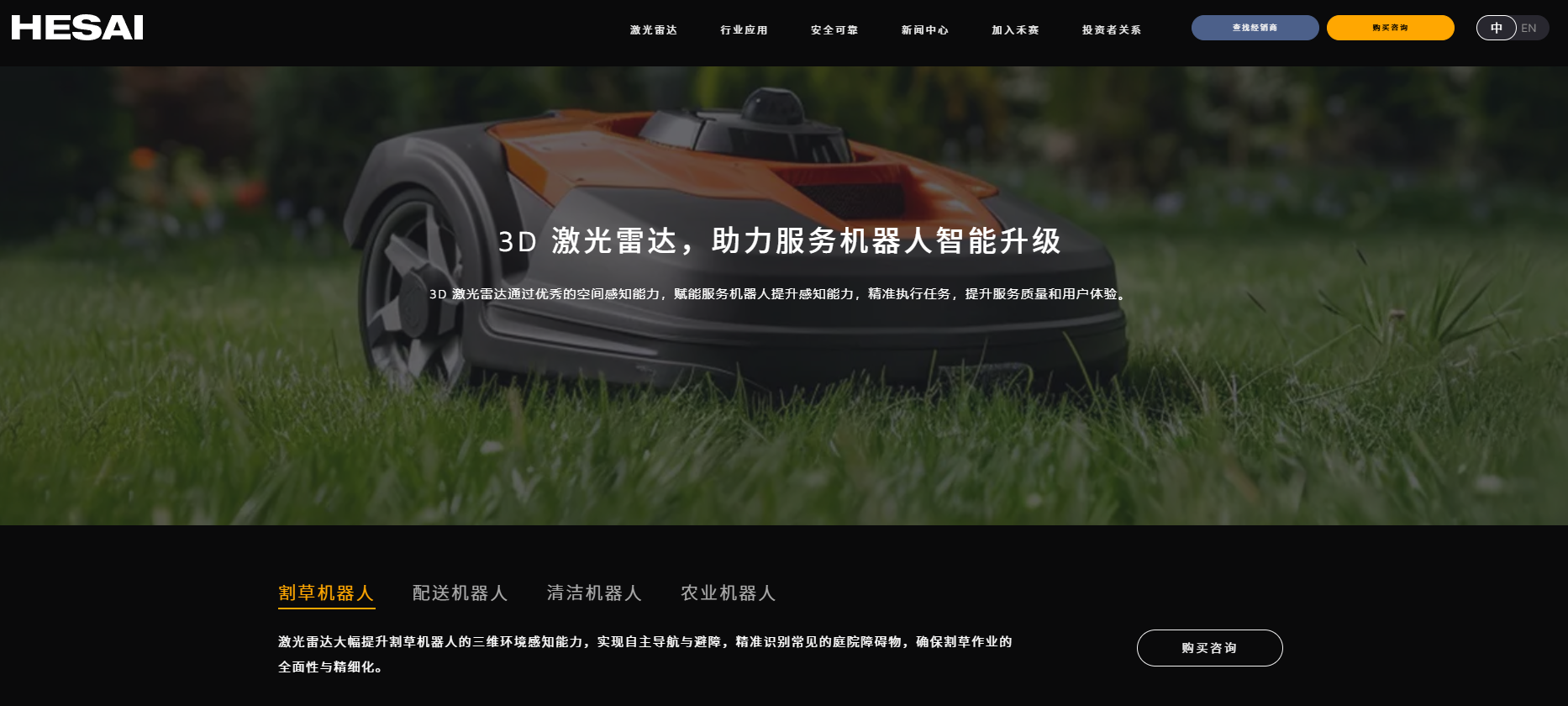
There is already a lidar dedicated to lawn mowers on Hesai Technology's official website Image source: Hesai Technology's official website
Ten years ago, even lawn mower robot companies would not believe that they could use this small component of lidar. A person from a head lidar company who did not want to be named told reporters that the price of a lidar ten years ago was as high as more than 100,000 yuan, "now our company's lidar is sold in e-commerce, and the price is only a few thousand yuan, and it is even lower to sell it to customers in batches."
The lidar company further said that the decline in the scale of lidar prices depends on the scale of on-board applications, "two years ago, new energy vehicles used a large number of lidar, forming a large-scale volume. In addition, we have done a lot of technological innovation ourselves, and the self-developed chip has improved the performance, and now the part for car companies has been reduced to 2,000 yuan."
"Performance improvement + cost reduction" makes lawn mower robots affordable to use lidar. More importantly, "this is not to reduce costs, but to upgrade the consumption of lawn mowers, which improves efficiency and experience." It is precisely because of the huge new energy vehicle application market that China's lidar performance is far higher than that of overseas companies, "overseas mass production is not enough, and there is no industrial large-scale application system support".
Lawn mower robots also have technical differences
The above-mentioned lidar person said that there are many orders from lawn mower robots, but their technical routes are also different. The reporter of "Daily Economic News" learned from industry insiders that the two major technical paths of lawn mower robots are RTK (real-time dynamic positioning) technology and lidar technology.
RTK technology has excellent positioning accuracy and relatively low cost, and can better cope with the general outdoor environment with visual AI algorithms. However, it is greatly affected by satellite signals, and there is a risk of unstable positioning in the signal occlusion area. Lidar has advantages in the accuracy and comprehensiveness of environmental perception, but the limited detection range is also its bottleneck. The reporter learned from Zongheng that in the field of UAVs, different types of lidars are used for different ranges, such as fixed-wing UAVs need long-range lidar to scan the ground, while multi-rotor UAVs can use short-range lidar due to their low flight altitude.
More and more manufacturers are trying to integrate RTK technology and LiDAR technology. This fusion scheme can realize the complementarity of multi-sensor data and improve the comprehensive performance of lawn mower robots in complex environments. For example, in some high-end lawn mowing robot products, RTK technology is used for high-precision positioning, determining the approximate location and operation path of the robot, and at the same time, with the help of lidar to perceive the surrounding environment in real time, optimize the path and avoid obstacles.
"From the first-principles point of view of lawn mower robots, the core problem solved by them is mowing the grass, so all technical iterations will revolve around this core demand. The purpose of adding visual recognition technology to the lawn mower robot is to improve its ability to recognize obstacles, so as to improve the mowing efficiency and positioning accuracy. The person in charge of the Nine Company said. From this point of view, visual technology and perception technology are not in conflict at the application level, but with the development of AI technology, the function of visual recognition technology is more extensible, for example, on the basis of identifying obstacles, it can further determine whether the obstacle is a stone or a pet dog, so as to make more accurate and efficient mowing path planning.
However, no matter which technology it is, it means a revolutionary iteration of China's lawn mower robot industry. And this iteration is no longer the same as the "low price" competition of Chinese products in the past, but a performance iteration. Liu Ming said that the company's lawn mower robot for golf courses and other large lawns is priced at about 6,500 euros, and the retail price for civilian use is within $1,000 to $2,000. The price of Ecovacs ranges from 899 euros to 2,000 euros, and the market response of products around 800 euros has been very good.
"Take the Segway Navimow i series, a new generation of intelligent lawn mower robots that we announced at CES 2024, for example, the product is priced at as low as $999, which is much lower than the cost of spending a year on traditional manual mowing, saving users a lot of mowing costs." The person in charge of No. 9 Company said.
China's lawn mower robot "going to sea" is very reminiscent of the sweeping robot of the year, Li Lei said, sweeping robots accounted for more than 20% of the floor cleaning category. From R&D to distribution, and then to floor cleaning, sweeping robots account for 20%, and the entire industry has taken almost ten years. The key change point is that in 2018, the sweeping robot introduced "LDS SLAM" technology, "basically more than doubled in two or three years." In 2020, after the mop self-cleaning technology leads, the market growth rate is accelerating."
At present, the overall proportion of intelligent lawn mower robots in the field of lawn mower robots is relatively low, about more than 10%. Even according to the development path of sweeping robots, it still has considerable room for development in the future.
Ticker Name
Percentage Change
Inclusion Date